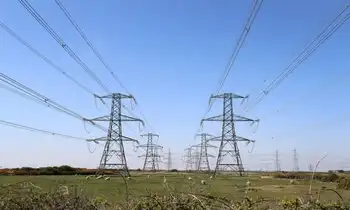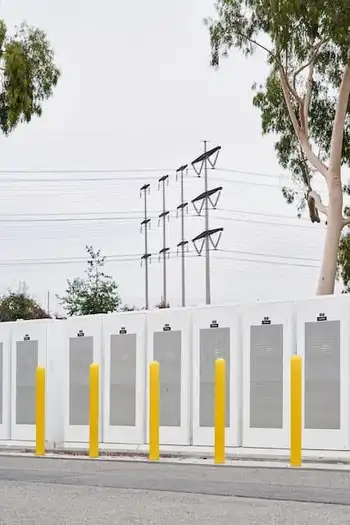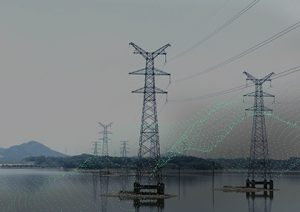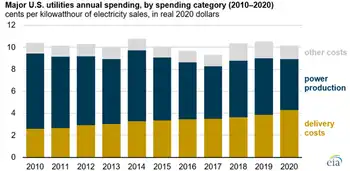Indonesia and China reform power sector
By The Punch
NFPA 70e Training
Our customized live online or in‑person group training can be delivered to your staff at your location.

- Live Online
- 6 hours Instructor-led
- Group Training Available
This is because the countryÂ’s power generation sector is dominated by the state-owned electric utility PT PLN (Persero), formerly known as Perusahaan Listrik Negara.
The PT PLN operates 45 power plants, or roughly two-thirds of the countryÂ’s generating capacity. In 2004, Indonesia had 25 gigawatts (GW) of installed electricity generating capacity.
During 2004, Indonesia generated 112.6 billion kilowatt hours (Bkwh) of electricity, of which 86 per cent came from conventional thermal sources (oil, natural gas, and coal), eight per cent from hydroelectric sources, and five per cent from geothermal and other renewable sources. In 2004, Indonesia consumed 104.7 Bkwh of electric power, showing net electricity exports during the year.
According to the 2002 Electricity Law, certain markets for power generation was to be opened for competition from 2007, while retail market competition was scheduled for this 2008, when power producers would be able to sell directly to their customers rather than through PT PLN.
The 2002 legislation also established a new regulatory body, the Power Market Supervisory Agency, and created incentives for rural electrification programmes.
Because of the threats of severe underinvestment, the government set out on a programme to expand generation capacity. The plan, known as the “10,000 MW Acceleration Programme”, aims to add 10,000 MW of new capacity by 2010.
In September 2002, the government passed a new legislation aimed at strengthening regulatory guidance in the power sector and promoting new investment in power projects.
However, little progress has been made on these proposals, mostly because foreign and private companies have shown little interest in investing in IndonesiaÂ’s electricity sector. Some of the previously-cancelled Independent Power Projects have been revived, but many of them remain in a stalemate over payment disputes.
One of the major obstacles to increasing IndonesiaÂ’s power generating capacity is pricing. The government sets the price at which PT PLN sells electricity in the country, and since the Asian Financial Crisis, it has often had to sell electricity at less than the cost of production. PT PLNÂ’s financial difficulties, coupled with its inability to increase power prices, have prevented the company from investing in new infrastructure projects to build up capacity.
IndonesiaÂ’s power is generated from a combination of sources including the conventional thermal, geothermal, thermal and other renewable. In 2004, the country generated 9.4 Bkwh of electricity from hydroelectric sources, representing about eight per cent of the countryÂ’s total generation. According to a U.S. Energy Information Administration data, Indonesia generated 6Bkwh of electricity from geothermal and other renewable sources in 2004, making up about five per cent of the countryÂ’s total electricity supply.
However, outside sources claim Indonesia currently has more than 800MW of geothermal capacity, making it the fourth largest producer of geothermal power in the world behind the United States, Philippines, and Mexico. Industry reports also suggest that Indonesia holds vast hydropower potential, but that the country was yet to embark on the same sorts of large hydroelectric facilities as seen elsewhere in the region. But the government estimates that the country holds large untapped geothermal resources, with the potential to supply up to 21 GW of additional generating capacity.
Since hydropower plants require huge upfront capital investments, it is unlikely that PT PLN or other companies in Indonesia will have the incentive to invest in hydroelectric projects in the near term. Several plans for large-scale geothermal development projects were scrapped when Indonesia faced economic turmoil during the Asian Financial Crisis.
But the government has stated that it would like to promote natural gas-fired and coal-fired power stations so that the country can utilize its domestic resource base and shift away from oil-fired power generation.
Under the Energy Revolution Scenario, electricity demand is expected to increase to a disproportionate extent, with households and services the main source of growing consumption. Due to the exploitation of efficiency measures, an even higher increase can be avoided, in spite of continuous economic growth, leading to an electricity demand of around 360 TWh/a in the year 2050.
Compared to the Reference Scenario, efficiency measures will avoid the generation of about 200 TWh/a. This continuing reduction in energy demand can be achieved in particular by using highly efficient electronic devices representing the currently best available technology.
The development of the electricity supply sector is characterized by a dynamically growing renewable energy market and an increasing share of renewable electricity. This will compensate for the reduction of coal and a reduction in fossil-fired condensing power plants to the minimum required for grid stabilization.
By 2050, 60 per cent of the electricity produced in Indonesia will come from renewable energy sources. ‘New’ renewables, such as wind, biomass, geothermal and solar energy, will contribute 70 per cent of this capacity. The following strategy paves the way for a future renewable energy supply:
The reduction of coal power plants and increasing electricity demand will be compensated for initially by bringing into operation new highly efficient gas-fired combined-cycle power plants, plus an increasing capacity of geothermal power plants. In the long term, geothermal, solar photovoltaic and biomass will be the most important sources of electricity generation.
PV, biomass and geothermal energy will make substantial contributions to electricity production. In particular, as non-fluctuating renewable energy sources, geothermal and biomass will be important elements in the overall generation mix.
Because of nature conservation concerns, the use of hydro power will be limited to small hydro power plants and grow up to 12,000 MW in 2050, although the potential is even higher.
Again due to nature conservation concerns, the use of biomass will be largely limited to agricultural waste and grow up to 5,000 MW in 2050, although the technical potential is ten times higher.
The installed capacity of renewable energy technologies will increase from the current 5GW to 78GW in 2050. Increasing renewable capacity by a factor of 15 within the next 42 years requires policy support and well-designed policy instruments. Because electricity demand is still growing, there will be a large demand for investment in new capacity over the next 20 years. As investment cycles in the power sector are long, decisions for restructuring the Indonesian supply system need to be taken now.
To achieve an economically attractive growth in renewable energy sources, a balanced and timely mobilization of all technologies is of great importance.
This mobilization depends on technical potential, actual costs, cost reduction potential and technological maturity. Up to 2010, hydro-power and biomass will remain the main contributors. From 2020 onwards, the continually growing use of geothermal will be complemented by electricity from photovoltaics, especially for the supply of households in villages and IndonesiaÂ’s more than 6,000 inhabited islands.
Until 2002, ChinaÂ’s power sector was run as a single unit under a state monopoly, the State Power Corporation. Thereafter, the unit was separated into generation, transmission, and services units.
According to an industry study conducted at the end of 2005, over 120 GW of generating capacity is currently under construction in China.
Although much of the new investment has been earmarked to alleviate electricity supply shortages, some independent analysts forecast the possibility of oversupply as an assortment of new projects are scheduled to come online between 2007 and 2009. To ward off a possible supply glut, Chinese government officials have made an effort to approve new projects at a steady and measured rate.
Since the reform, ChinaÂ’s electricity generation sector is dominated by five state-owned holding companies, namely China Huaneng Group, China Datang Group, China Huandian, Guodian Power, and China Power Investment.
These five holding companies manage more than 80 per cent of ChinaÂ’s generating capacity. Much of the remainder is operated by independent power producers, often in partnership with the privately listed arms of the state-owned companies. Deregulation and other reforms have opened the electricity sector to foreign investment, although this has so far been limited.
During the 2002 reforms, SPC divested all of its electricity transmission and distribution assets into two new companies, the Southern Power Company and the State Power Grid Company. The government aims to merge SPC?s 12 regional grids into three large power grid networks, namely a northern and north-western grid operated by the State Power Grid Company and a southern grid operated by the Southern Power Company and the hope to achieve an integrated national electricity grid by 2020.
Also in 2002, the State Electricity Regulatory Commission was established, which is responsible for the overall regulation of the electricity sector.
In view of its huge population, china has a cocktail of energy mix, although its electricity generation continues to be dominated by fossil fuel sources, particularly coal but the government has made the expansion of natural gas-fired power plants a priority.
Conventional thermal sources are expected to remain the dominant fuel for electricity generation in the coming years, with many power projects under construction or planned that will use coal or natural gas.
In 2004, China was the worldÂ’s second-largest producer of hydroelectric power behind Canada. In the same year, it generated 328 billion kilowatt hours (Bkwh) of electricity from hydroelectric sources, representing 15.8 per cent of its total generation. This figure is likely to increase given the number of large-scale hydroelectric projects planned or under construction in China.
During the same period, China had total installed electricity generating capacity of 391.4 GW, 74 per cent of which came from conventional thermal sources. In 2004, China generated 2.08(Bkwh) and consumed 1.93Bkwh of electricity. Since 2000, both electricity generation and consumption have increased by 60 per cent.
Between 1990 and 2010, the country is expected to almost triple its consumption of electricity. China recently opened its power sector to foreign investment. Several joint ventures have already been established for the construction of electric generating units. China is modifying its legal framework to allow the possibility of full foreign ownership of power plants.
In at least one project a build-ownership-transfer financing arrangement is being tested. Coastal constructed a 40-megawatt power plant in Wuxi City and began construction on a 76-MW power plant in Suzhou, and plans a 72-MW plant in Nanjing. Enserch reached an agreement to cooperatively develop and operate a 36-MW coal-fired plant near Zhejiang.
As with coal mining, the Chinese government is looking to shut down or modernize many small and inefficient power plants in favour of medium-sized (300 to 600MW) and large (1000MW and up) units.
ChinaÂ’s eleventh five-year plan, covering the period 2005-2010, calls for the country to increase the share of natural gas and other cleaner technologies into the countryÂ’s energy mix. There are several examples of ChinaÂ’s effort to bring new natural gas-fired power stations online.
In July 2006, Huaneng Power International, which is ChinaÂ’s largest listed electricity generation company, started operations at a new natural gas-fired power plant in Shanghai. The facility has a capacity of 1,200MW, making it ChinaÂ’s largest natural gas-fired power station.
Construction is also underway at the 2,000-MW Huizhou power plant near Shenzhen that will use 560,000 metric tonnes of Liquefied Natural Gas per year from the new Guangdong terminal. Also in Guangdong, at least six other 300-MW natural gas-fired units are planned or under construction, and 1.8GW of other existing coal and oil-fired power plants are being converted to run on natural gas.
The first natural-gas fired plant in Beijing started operations in July 2006. The new unit has a capacity of 150MW, and several companies worked hard to open additional larger natural gas-fired generators in Beijing before the 2008 summer Olympics.
Although many analysts forecast that natural gas will see the greatest percentage rise in installed electricity generation capacity over the next decade, coal is expected to show the largest increase in absolute terms.
In the first half of 2006, the continued uncertainty over future Russian natural gas supplies and the rising costs of planned LNG imports may push China even more toward coal for its future energy needs. China has vast coal reserves, much of which have yet to be developed, and coal projects tend to be much cheaper than natural gas or other sources.
China is currently building the Three Gorges Dam hydroelectric facility, which, when completed in 2009, will be the largest hydroelectric project in the world.
The will include 26 separate 700-MW generators, for a total of 18.2GW. When completed, although the Three Gorges project already had several units in operation, but the project is not expected to be fully completed until 2009.
Another large hydropower project involves a series of dams on the upper portion of the Yellow River. Shaanxi, Qinghai, and Gansu provinces have joined to create the Yellow River Hydroelectric Development Corporation, with plans for the eventual construction of 25 generating stations with a combined installed capacity of 15.8GW.
China is also actively promoting nuclear power as a clean and efficient source of electricity generation. Although it makes up only a small fraction of ChinaÂ’s installed generating capacity, many of the major developments taking place in the Chinese electricity sector recently involve nuclear power.
EIA and independent sources forecast that China will add between 15 and 30 GW of new nuclear energy capacity by 2020, but even with this expansion, nuclear power will only represent between 2.5 and 4.5 per cent of total installed generating capacity.
As of mid-2006, China had eight new nuclear power plants under construction, the biggest of which is a 6-GW nuclear complex at Yangjiang in Guangdong province, set to begin commercial operation in 2010.















